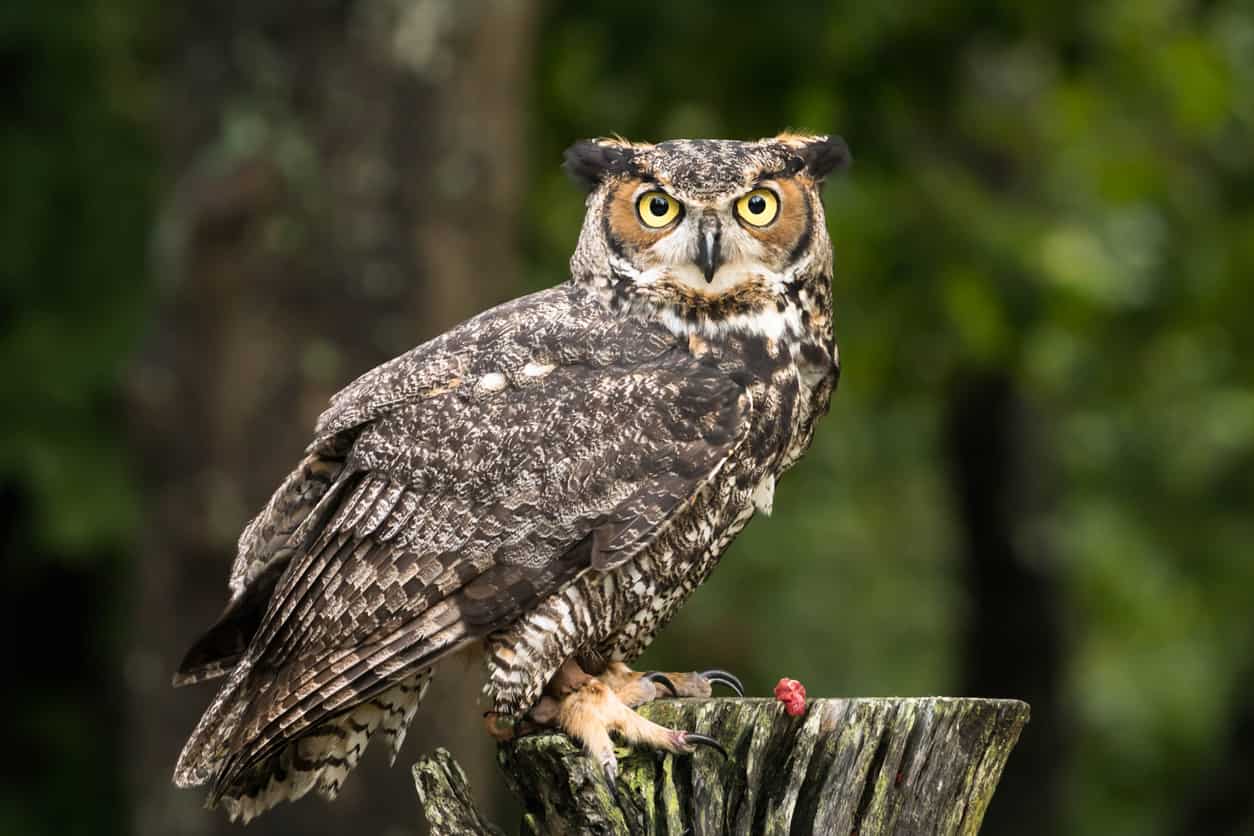Owls are known in popular culture as being a wise animal that knows everything — but how much do you know about them? While great horned owls (Bubo virginianus) are common across North and South America, many people never get a glimpse of these nocturnal birds. Here are seven things you didn’t know about great horned owls.
1. They Don’t Actually Have Horns
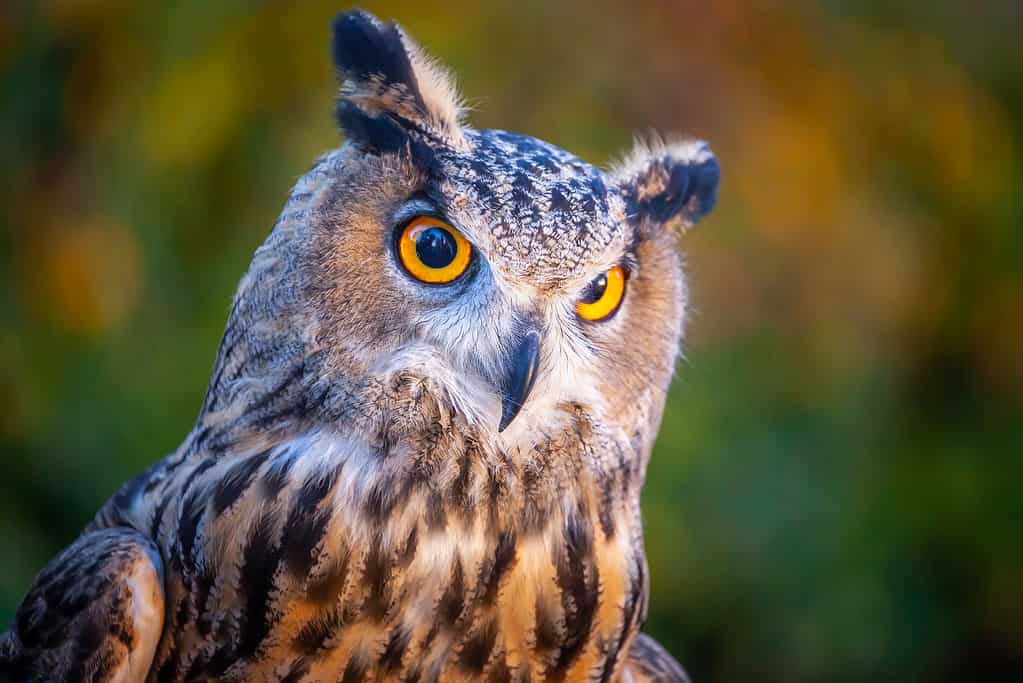
A great horned owl’s ears are actually on the sides of its head, even with its eyes.
©agustavop/iStock via Getty Images
Despite what the name implies, great horned owls don’t actually have horns. The horn-like plumes on their head are actually just made of feathers. These feather tufts are called plumicorns. Scientists aren’t certain what purpose these feather tufts actually serve, but hypotheses range from camouflage to communication with other owls.
2. Great Horned Owls Don’t Mind Stinky Food
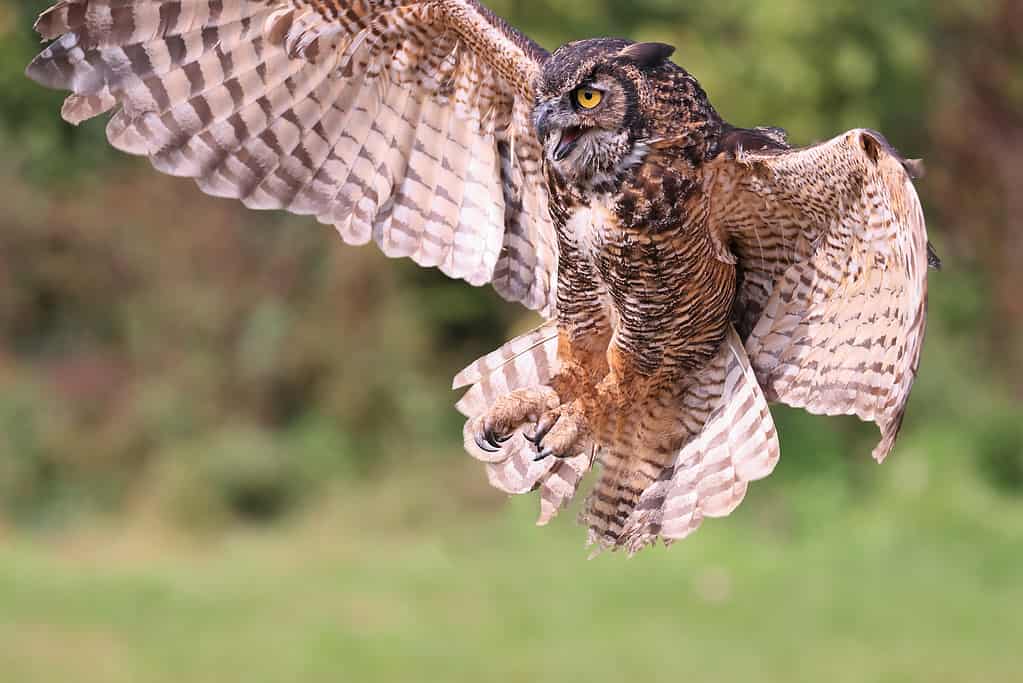
Great horned owls have a wingspan of around 4.6 feet.
©Vladone/iStock via Getty Images
While most people and animals avoid the smell of a skunk, it doesn’t deter these owls. Raptors like these owls do not have a good sense of smell; the portion of the owl’s brain devoted to odor is much smaller than that of a mammal. As a result, the skunk’s stinky defense mechanism doesn’t bother the great horned owl.
In fact, skunk is a favorite food of these predators, despite being much heavier than the bird. A skunk can weigh up to 13 pounds, which is almost three times as much as an owl. In comparison, the largest great horned owl ever recorded weighed in at 5.5 pounds. Luckily, the owls’ incredible strength allows them to capture larger prey, making skunks a regular item on this nocturnal predator’s menu.
3. Great Horned Owls Are Stronger Than People
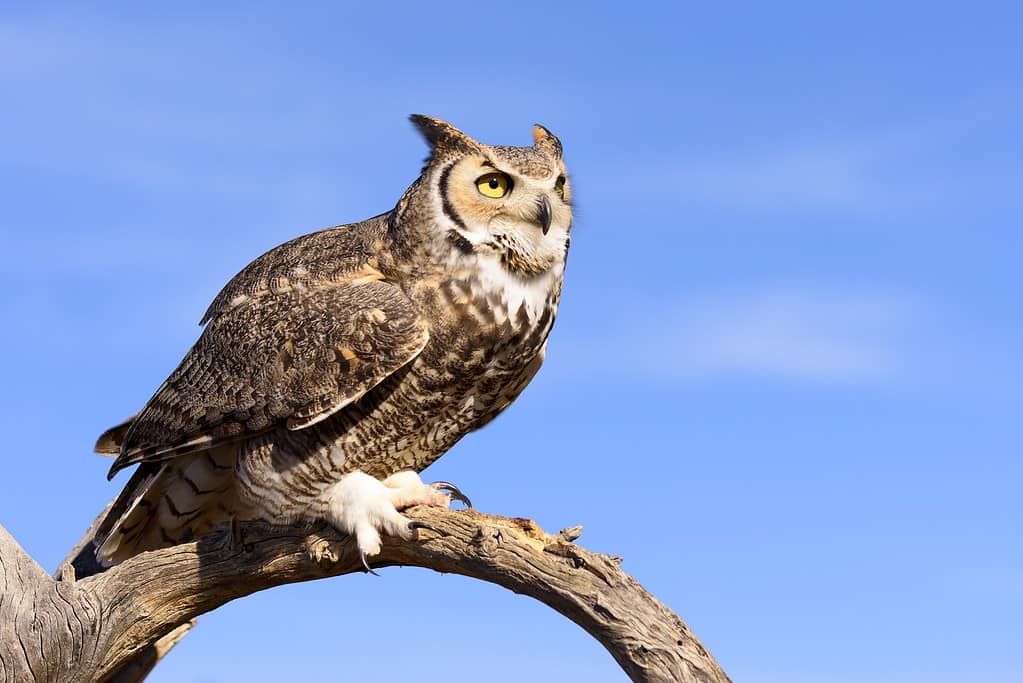
The amount of pressure in a great horned owl’s talons can sever the spines of its prey,
©kojihirano/iStock via Getty Images
Just how strong are these fearsome predators? When you take into account their size, much stronger than people. Great horned owls have a grip strength of up to 500 pounds per square inch. In comparison, people can only squeeze around 65 pounds per square inch. And they don’t let go easily: when a great horned owl clenches its talons, it takes 28 pounds of force to open them.
The owl uses this crushing strength to kill prey quickly, swooping down and breaking an animal’s back before it ever knows what hit it. The incredible grip strength also allows owls to securely hold on to their prey in flight. A great horned owl can fly holding prey that weighs up to 1.5 times the owl’s body weight.
4. They Can’t Turn Their Heads All the Way Around

While owls can’t rotate their heads a full 360 degrees, they can turn their head far enough around to look backward.
©cindylindowphotography/Shutterstock.com
Despite what is often depicted in films, owls cannot turn their heads all the way around. However, they can come close! Great horned owls can turn their heads up to 270 degrees in either direction. This impressive mobility is made possible by the number of vertebrae in their necks. While humans only have seven cervical vertebrae, owls have 14.
5. The Owl’s Wings Are Silent
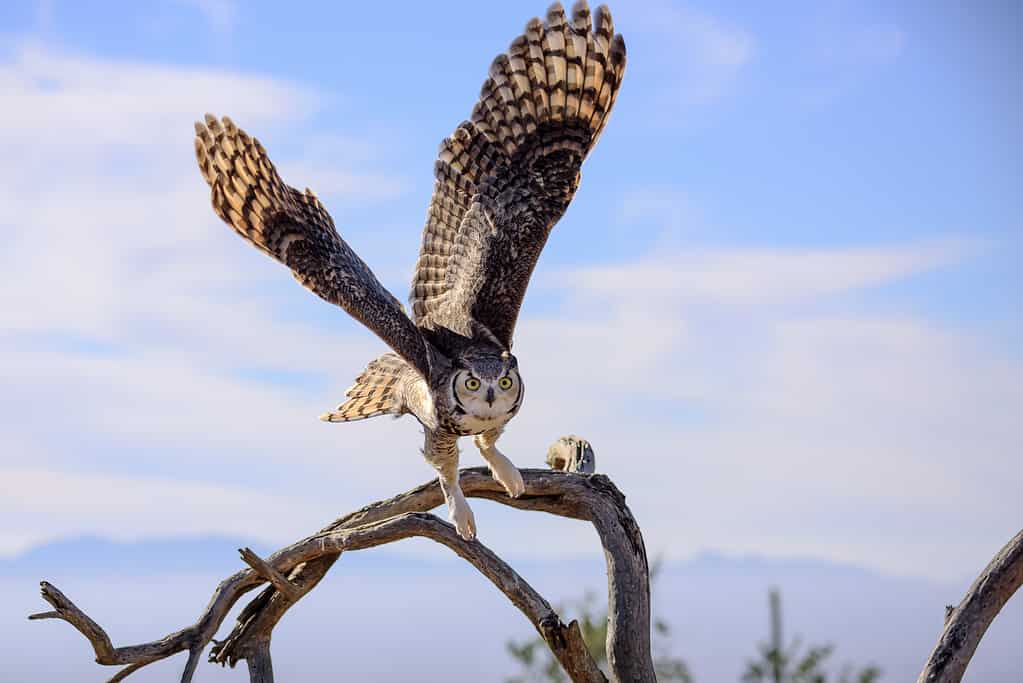
Each wing has 10 primary feathers, 13-14 secondary feathers, and 3 tertiary feathers.
©iStock.com/kojihirano
While you may have heard the call of a great horned owl, you’ve probably never heard them fly by overhead. Owls have fringe-like flutings on the edges of their feathers that allow the wind to pass through the feathers silently. This silent flight allows the owl to swoop down over prey without announcing their presence. It also enhances the owl’s ability to hear and triangulate their prey, as there is no sound of loudly flapping wings to obscure the noises of other animals.
This is especially important because these owls are not the fastest of birds (their top speed is around 40 miles per hour). However, what they lack in speed, they make up for in stealth, thanks to their silent flight.
6. They are Lazy About Housing
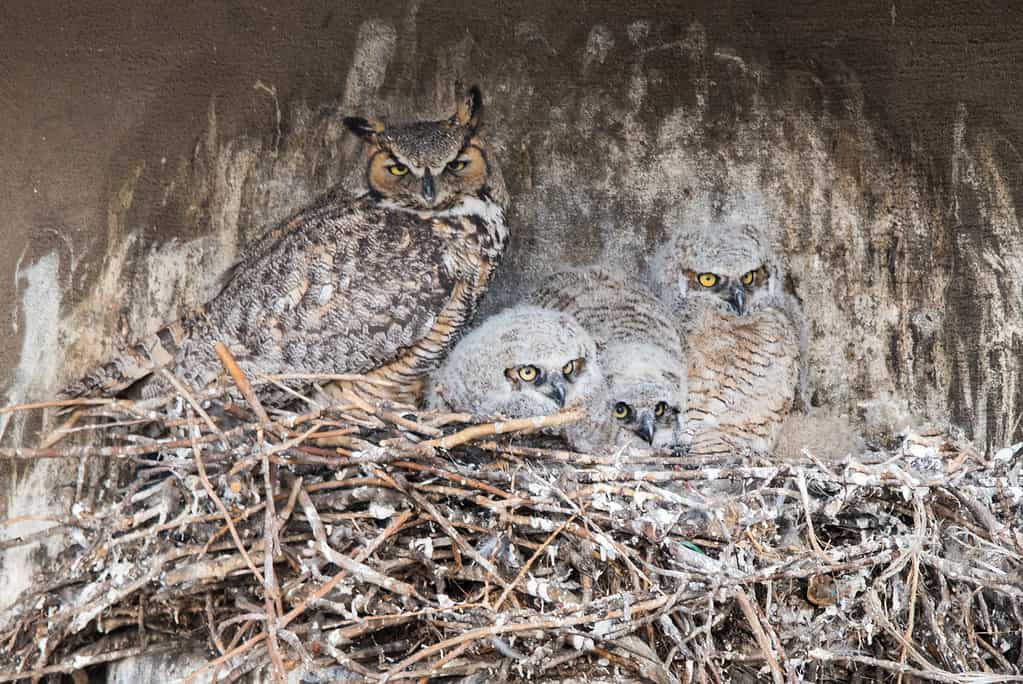
Clutches typically contain between 1 and 4 eggs.
©iStock.com/Bobliving
Why take time to build your own nest when you could borrow someone else’s? Great horned owls are notorious for moving into the nests of other species, including crows, hawks, squirrels, and bald eagles. Since great horned owls are early nesters that begin laying eggs in mid-February, they have been known to steal nests from migratory birds that have not yet returned for the season.
7. Rat Poison is Decreasing the Owl’s Numbers
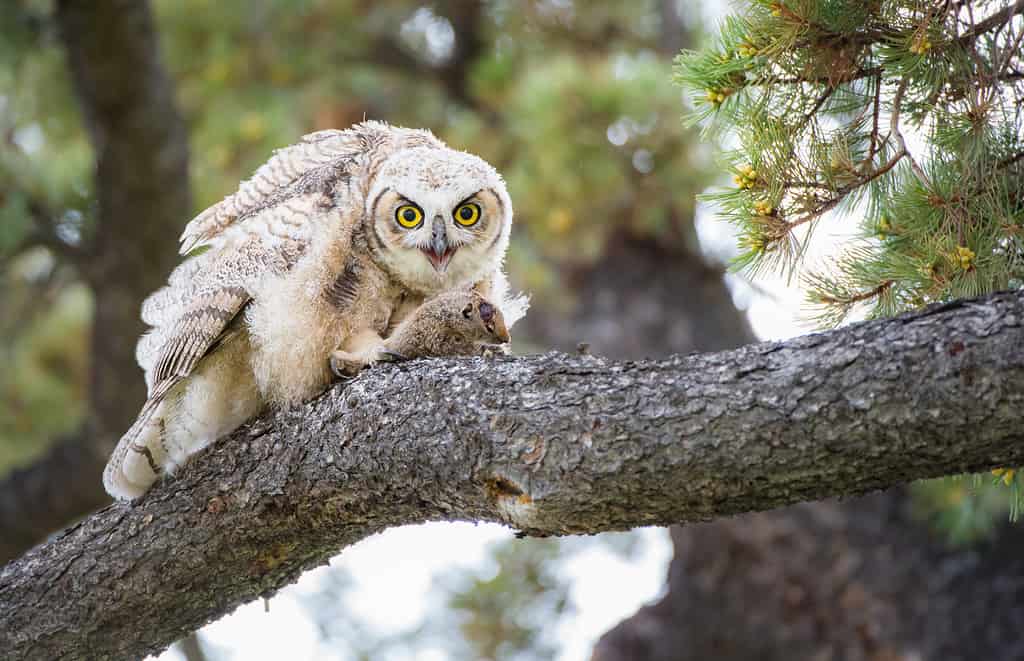
Great horned owls are incredibly adaptive, and their diverse diet reflects that.
©Jillian Cooper/iStock via Getty Images
While there are an estimated 3.9 million great horned owls in North America, their numbers have declined in recent years. Data from Partners in Flight, a land bird conservation organization, shows that great horned owl populations have seen a 27% decrease across Canada and the United States in the past few years.
While habitat loss, collisions, and illegal poaching are contributors to this decline, another big threat to owl populations is rodenticide. While owls don’t consume this poison directly, the animals that do (rodents such as rats and mice) are a popular food for the predators. As a result, the owls ingest the poison as well, which can cause extensive internal bleeding and slow, painful death. By reducing or eliminating the use of rodenticides and other poisons, we can protect the impressive predators that naturally help keep these pest populations under control.
Summary of Great Horned Owl Facts
| Fact | Details |
|---|---|
| 1. They don’t actually have horns | The great horned owl’s “horns” are actually feather tufts. |
| 2. Great horned owls don’t mind stinky food | Striped skunks are a favorite food of great horned owls. |
| 3. They are stronger than people | The grip strength of these owls is around 10 times that of a human. |
| 4. Owls can’t turn their heads all the way around | Great horned owls can turn their heads 270 degrees in either direction. |
| 5. The owl’s wings are silent | Fringe-like flutings on the feathers allow air to pass through silently. |
| 6. They are lazy about housing | They will commonly use nests made by other animals. |
| 7. Rat poison is decreasing the owl’s numbers | Many of the great horned owl’s favorite foods are at risk of ingesting rodenticide. |
Thank you for reading! Have some feedback for us? Contact the AZ Animals editorial team.

